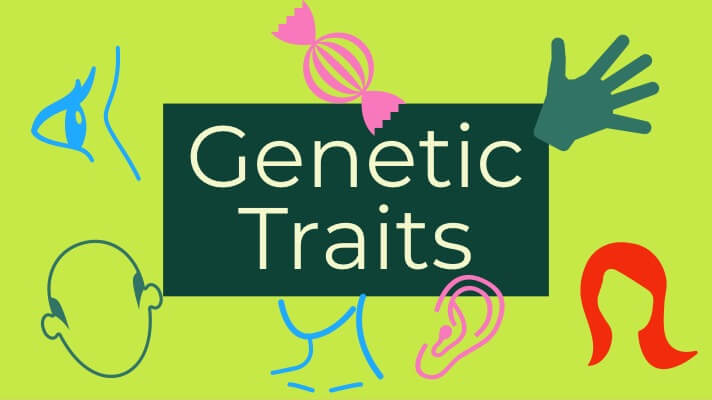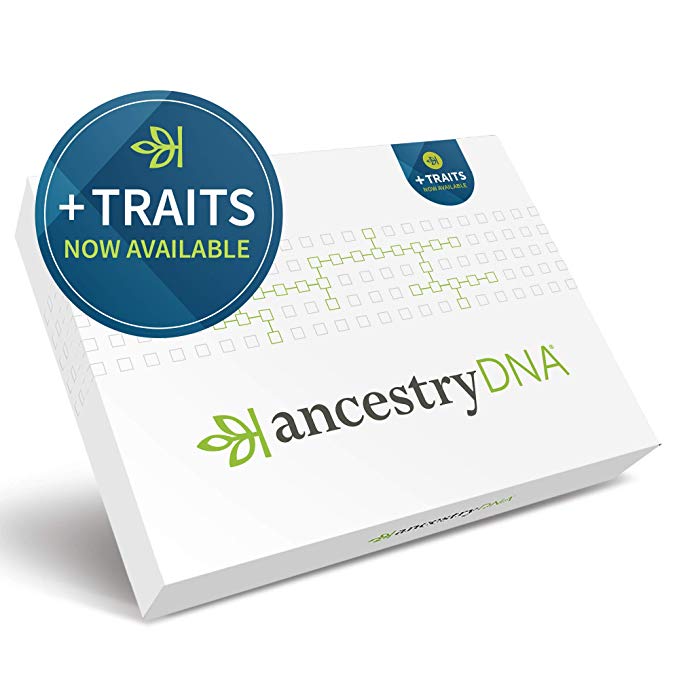Blog


5 Tips for Finding Families in the 1790 US Census
The 1790 United States census was the first census taken after the establishment of the new country, so documenting ancestors’ presence at this historic time often inspires a sense of patriotism. However, locating those census entries can pose a few challenges. Use these five tips to conduct a more successful search in the 1790 census as well as in other documents.
Thank you to the experts at Legacy Tree Genealogists for this guest post!
1. Meet handwriting challenges head-on.
Handwriting from the 1790s often looks like a foreign language to modern eyes, including to people who helped index the census. The FamilySearch Wiki includes links to several videos and articles under the title “United States Handwriting.” Use these links to become familiar with the different writing styles in early American records. If your ancestor doesn’t seem to appear in the census index, look for creative spellings by the census taker.
Also, try looking for the name by substituting letters that might have been misread by the indexer. For instance, a search for Silas Sawdy initially turned up no results, even looking for Sandy, Lawdy, and Landy. The entry for “Silas Soddy” was finally located by going through the census page by page, but the indexer had read his name as Tilus Toddy.
Image: 1790 Census, courtesy of FamilySearch.org
2. Know what is included in the 1790 U.S. Census.
The 1790 U.S. Census contains very limited information about the household members. Census entries were organized using the names of heads of households, with tick marks in different columns to indicate household members. There were only five questions asked about the individuals in each dwelling:
- The number of free white males under 16 years of age
- The number of free white males age 16 and upward
- The number of free white females
- The number of other free persons
- The number of slaves
The count could include visitors, servants, relatives, and of course, the members of the immediate family. Some children might have been working outside the home or were being cared for by others. In those instances, the children would have been enumerated in the household where they lived the day the census was taken. When the father in the family was deceased, a son would usually be listed as the head of household rather than the surviving widow, though some women were given that title. The oldest person was also not always listed as head of household, especially if elderly parents made their home with a younger family member.
3. Gather information about your ancestor’s family structure.
The 1790 census is not a stand-alone document. Learn as much as possible about your ancestor’s family and use this knowledge in conjunction with the census. Collect documentation from later censuses, town records, land dealings, wills, and local histories. When there are several possible matches in the 1790 census, focus first on those whose family structure most closely fits the target households. For example, if your ancestor had young sons in 1790 and there were several households in the area headed by men with the same name, it is easier to rule out the entries with no males under 16. Remember that the household numbers did not always reflect just the members of the family, so especially if there were more individuals in the household than expected, the entry may still be for your ancestor.
4. Locate the proper area for your search.
Use gazetteers and maps of the places your ancestors lived. Names of towns and counties, as well as their boundaries, fluctuated over time. The FamilySearch Wiki contains valuable information about the locations and dates of these changes, as do other online sources. It is vital to know that the 1790 census returns from Delaware, New Jersey, Virginia (including West Virginia), and Georgia, along with the territories of Kentucky and Tennessee were destroyed when the Capitol was burned in the War of 1812. Surviving records are from the present states of Maine (included as part of Massachusetts), New Hampshire, Vermont, New York, Pennsylvania, New York, Massachusetts, Rhode Island, Connecticut, Maryland, North and South Carolina.
5. Research all the families in the area with the target surname and related surnames.
Once the ancestral town for the family has been determined, gather census records for all those in the area with that surname, moving outward to the county level, then the state. Especially if the surname is uncommon, it may be possible to find other documents to link these families together. Pay particular attention to families who live near each other who have known surname connections. For example, if two possible matches exist for Isaac Johnson but one is enumerated on the same page as Eli Garrick and the ancestral Isaac Johnson married a Garrick, that entry is more likely to be for the ancestor.
Though locating ancestors in the 1790 U.S. Census can be a challenge, this document can provide a valuable “puzzle piece” to create a complete picture of the family.
Legacy Tree Genealogists is a full-service genealogical research firm that helps clients worldwide discover their roots and personal history through records, narratives and DNA. Visit the Legacy Tree Genealogists website for a FREE consultation!
Exclusive Offer for Genealogy Gems readers: Receive $100 off a 20-hour research project using code GGP100.

Genetic Traits at Ancestry DNA
Get a new perspective on your DNA results with AncestryDNA’s new Genetic Traits feature. For just $10, you can discover how traits run in your family and might even come from ethnic origins, with no additional DNA test needed. It’s a deeper look into what makes you YOU, and it’s a fantastic way to engage non-genealogists in your family to be interested in where they come from.
Share Traits This Holiday Season
While the new Genetic Traits feature from AncestryDNA may not be directly applicable to genealogical research or uncovering brick wall ancestors, it’s the ideal tool to interest the non-genealogist in your family. Your relatives might not be interested in cousin-matching and identifying shared ancestors, but they will love discovering what makes them unique. The Genetic Traits tool provides another vehicle for people to discover their origins and connect with their past in a meaningful way. If you’re giving a DNA test kit as a gift this year, consider gifting the Traits feature as well. And have fun exploring your own traits! Order now at Ancestry.com or on Amazon.

New AncestryDNA Feature: Genetic Traits
November 9, 2018: “Ancestry’s long history of innovation has driven our leadership in family history and, more recently, the emerging field of consumer genomics. Today, we’re proud to introduce a fun and innovative way for you to further explore who you are and where you come from – AncestryDNA Traits. Using science and data to power ongoing journeys of discovery, Traits is a new interactive experience that allows you to discover traits and attributes influenced by your DNA. With AncestryDNA Traits, you can explore up to 18 traits and attributes that you’ve inherited from your ancestors, share with family, and may pass down to future generations.”
- Identify 18 traits (full list below)
- Compare your genetic markers to your matches via the AncestryDNA mobile app to see who in your family you share certain traits with.
- Explore an “Around the World” interactive map, where you can see how your traits align with your heritage.
- New customers can upgrade their AncestryDNA kit to include Traits for an additional $10.00 on Ancestry.com and Amazon. Existing customers can purchase the Traits feature for $10.00 through their Ancestry account.
Identifiable Traits
- Finger length
- Cleft chin
- Earlobe type
- Earwax type
- Eye color
- Freckles
- Hair color
- Hair type
- Hair strand thickness
- Iris patterns
- Male hair loss
- Skin pigmentation
- Unibrow
- Bitter taste perception
- Sweet taste perception
- Savory taste perception
- Asparagus metabolite detection
- Cilantro aversion
More About Traits
From Ancestry: “Powered by AncestryDNA, Traits gives you an even deeper look at your personal story through the “Around the World” interactive map. You can explore how your traits align with your heritage and learn whether your green eyes are common in other people with Irish ancestry.

Lacey Cooke
Lacey has been working with Genealogy Gems since the company’s inception in 2007. Now, as the full-time manager of Genealogy Gems, she creates the free weekly newsletter, writes blogs, coordinates live events, and collaborates on new product development. No stranger to working with dead people, Lacey holds a degree in Forensic Anthropology, and is passionate about criminal justice and investigative techniques. She is the proud dog mom of Renly the corgi.
Disclosure: This article contains affiliate links and Genealogy Gems will be compensated if you make a purchase after clicking on these links (at no additional cost to you). Thank you for supporting Genealogy Gems!

U.S. Naturalization Records & More New Genealogy Records Online
U.S. Naturalization Records at MyHeritage top the charts this week for new records collections online. Over 200 million records are available for Illinois, Indiana, Iowa, Wisconsin, Connecticut, Maine, Massachusetts, New Hampshire, Rhode Island, and Vermont. Also new this week are German marriages, baptisms, and burials. Britain marriage licenses dating back to the 12th century may also pique your interest and are available online.
U.S. Naturalization Records
New this week at MyHeritage are over 200 million U.S. Naturalization Records. First is the record index for Northern Illinois, 1840-1950, containing petitions for naturalization filed in northern Illinois circuit court and INS District 9. In addition to Illinois, INS District 9 covered parts of northwestern Indiana, eastern Iowa, and southern and eastern Wisconsin. Data collected prior to 1906 was limited, likely containing just the name of the petitioner, their country of origin, and record dates and numbers. After 1906, you’ll be more likely to see records with not only names, but also addresses, birth dates, witnesses present, and date and place of arrival the U.S.
Also new is the Naturalization Record Index for New England, 1791-1906. This collection is an index of naturalization documents filed in courts in the states of Connecticut, Maine, Massachusetts, New Hampshire, Rhode Island, and Vermont from 1791 to 1906. The 3X5 inch cards in this collection contain limited information. But the 5X8 inch cards will likely contain the name of the petitioner, petition for citizenship, oath of allegiance, record of previous citizenship, place and date of birth, occupation, place and date of arrival in the United States, name of the ship, place of residence at the time of application, and name and address of a witness to these statements.
German Marriages
Genealogy Giant website Ancestry.com has a new collection of Eberswalde, Germany, Marriages, 1874-1936. Within these records, you can find a wealth of information, including names, occupations, birth date, parents, witnesses, and more. Each document has a front and back and are displayed one after the other. Additional events from the life of the couple were sometimes recorded later on in the margins, but these notes are not indexed. In addition to these civil registers, complementary alphabetical directories of names may also have been created. These directories may tell you the names of the bride and groom, occupations, residence, and cross-reference to the marriage register.
Ancestry has also recently partnered with FamilySearch to provide free access to Lutheran Baptisms, Marriages, and Burials, 1500-1971. From the collection description: “This collection contains parish registers from numerous Protestant communities and military garrisons found in former or modern German territories. The records are largely organized according to historical regions and church districts that may differ from current affiliations. These parish records primarily contain information about births and baptisms, marriages, and deaths and burials.” It’s important to note that this collection is in German, so you may want to reference the German Genealogical Word List on the FamilySearch Wiki.
Britain Marriage Licenses
If your ancestors were married in England, you’ll want to explore this great collection of Britain Marriage Licenses at Findmypast. Fifteen English counties are represented including London, Lancashire, Suffolk, Exeter, Lincoln, Yorkshire, and more, and records date back as early as 1115! These marriage licenses may be able to tell you the couple’s names, father’s name, and the marriage location. The collection consists of a mixture of more than 536,000 handwritten and typed record books from 1115 until 1906 provided by the College of Arms, Anguline Research Archives, and Gould Genealogy.
Reconstruct Your Ancestors’ Stories
When records have been destroyed, or simply remain elusive, you can still put the pieces together to discover your ancestors’ stories! In the new Genealogy Gems Premium eLearning Video, instructor Sunny Morton will show you how to reconstruct fascinating experiences from your own family history by combining clues from your family’s knowledge, documents from genealogy websites, good historical research and Googling to fill in the gaps. All while learning the riveting story of one of the worst disasters in U.S. history. Members can watch right now by clicking here. Not a member? Sign up today!


Lacey Cooke
Lacey has been working with Genealogy Gems since the company’s inception in 2007. Now, as the full-time manager of Genealogy Gems, she creates the free weekly newsletter, writes blogs, coordinates live events, and collaborates on new product development. No stranger to working with dead people, Lacey holds a degree in Forensic Anthropology, and is passionate about criminal justice and investigative techniques. She is the proud dog mom of Renly the corgi.
Disclosure: This article contains affiliate links and Genealogy Gems will be compensated if you make a purchase after clicking on these links (at no additional cost to you). Thank you for supporting Genealogy Gems!






